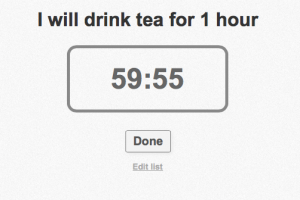Previously in part 1… Melissa Dale (not her real name) has never used any kind of To Do list before this week but now her work has ballooned and she’s writing lists “to tame” the job and stop being overwhelmed. She’s got her list and she’s cracking on with it. Now read on.
It’s yesterday afternoon, I’m working away here and this email lands:
From: Melissa.Dale@acme-psuedonym.com
Date: 15 October 2014 13:56:24 BST
To: wg@williamgallagher.com
Subject: RE: Case studies
Number one on my To Do list only just completed! 🙁
Notice the time. She started at 09:00 and this was just before 14:00. That’s getting on for five hours spent on the first of what is an enormous To Do list. I think that when this happens to you, you end up looking at me and saying nuts to all your advice, it clearly isn’t working.
It isn’t.
But on the one hand I think it still will in the end and on the other, I don’t see an alternative. Trying to do her new duties the way she did before is just not going to work. I can admire Melissa for having coped with her job for a long time without To Do lists but in a way that’s hurting her now: she’s not had to be prepared to handle so many new tasks at once. So she’s got these new tasks but she’s also got the task of handling the tasks. That doesn’t go on a list but this doesn’t make it any easier.
We have a slight complication in that Melissa can’t show me her To Do list: there’s too much on there that is confidential. So I’m trying to help her with the theory, it’s down to her to apply it. And that’s fine, that’s really how it ought to be, but Melissa’s in the trenches there and I think she’s going in with a list that isn’t helping her.
To Do lists are dangerous things. If you’re the type of person who just likes To Do list, that’s happy for you. Most of us like having done things and the list is the way to do that, so we like the list’s effect. We’re not OCD-organised list fans. Melissa is certainly not a list fan. But she’s been forced to use one because of the sheer volume of work and the thing with sheer volumes is that they tend to also come with sheer timescales. She has not got the time in her day to step away and concoct a perfect To Do list.
Ordinarily, I’d be glad about that: I want you spending time doing things, not twiddling with lists of things.
In this case, though, she dumped every single thing out of her head and onto the list – so far, so great – and has then immediately begun working through it. Exactly as it is, right in front of her.
I’ve advised her to take a few minutes to look at all of the tasks. Look for ones that belong together or have anything in common. Phone calls, for instance, she’s got plenty of those. Whatever task you’re doing, there is the task itself and there is the run up to and the lead away from: with a phone call it’s perhaps getting a desk or a space where you won’t be interrupted, it’s looking up the number and then after the call it’s noting down what has happened and what tasks have come out of it. If you do the next call tomorrow, it’s exactly the same thing. But if you do the next call right now, it isn’t.
You’ve found your quiet space, you’ve got all your phone numbers, make as many calls as you can in one sitting. Think about all the calls you can make. Every job is divided into many projects – Melissa now has responsibility for different areas of the UK so you might well create a North East list or a South West one – but ignore that division and make as many calls across as many projects as you can. You save a little time before each one by already being there, already being ready, and what’s more you have just attacked your To Do list in many different projects. You’ve pushed them all forward.
Melissa didn’t sound very convinced by this but she’s going to try it. And she’s going to look for the same thing in other areas: can you group all your emails together, for instance? If two tasks on two projects require you to be in the same place in the North East, can you arrange to do both on the same day?
One last thing. One last thing that Melissa wasn’t just unconvinced of but actually gave me that jerk of the head that says yeah, right, sure, a likely story. When she goes through her whole list she will find that there are tasks in there that she doesn’t have to do.
I promised her and I promise you. It is always true. Dump everything out of your head and then work your list: you’ll have done some things already, you’ll be able to group others and there will be yet more that you simply do not have to do.
I’ll tell you how Melissa gets on.
